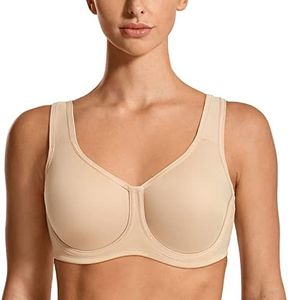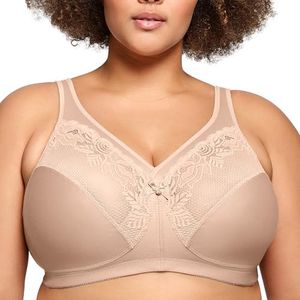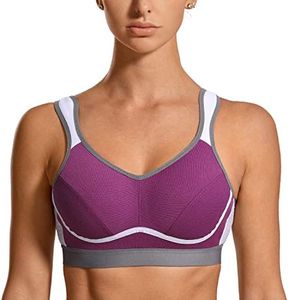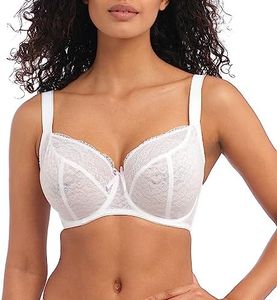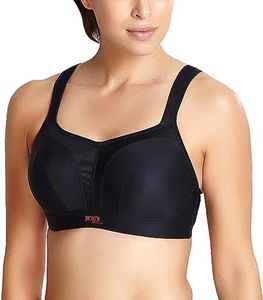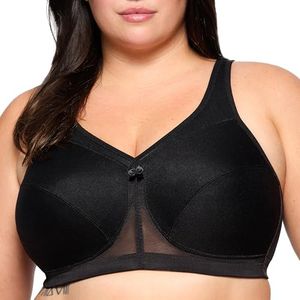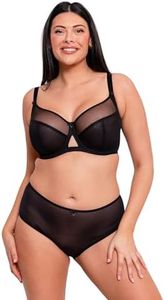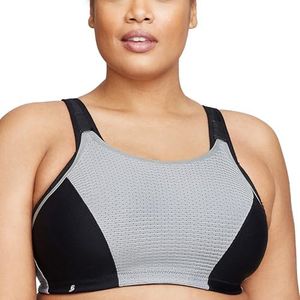We Use CookiesWe use cookies to enhance the security, performance,
functionality and for analytical and promotional activities. By continuing to browse this site you
are agreeing to our privacy policy
10 Best Bras For Heavy Breasts
From leading brands and best sellers available on the web.Recommended lists
Buying Guide for the Best Bras For Heavy Breasts
Choosing the right bra for heavy breasts is crucial for comfort, support, and overall breast health. The right bra can help alleviate back pain, improve posture, and enhance your silhouette. When selecting a bra, it's important to consider several key specifications that will ensure you get the best fit and support for your needs. Understanding these specifications will help you make an informed decision and find a bra that feels comfortable and supportive throughout the day.Band SizeThe band size is the measurement around your rib cage, just under your bust. It's important because the band provides most of the support in a bra. A well-fitting band should be snug but not too tight, and it should sit level around your body. To find the right band size, measure your rib cage and round to the nearest whole number. If you're between sizes, consider the fit and comfort of the band when trying on bras. A properly fitting band will help distribute the weight of heavy breasts more evenly, reducing strain on your shoulders and back.
Cup SizeCup size indicates the volume of the bra cups and is crucial for accommodating the size of your breasts. For heavy breasts, it's important to have a cup that fully encases the breast tissue without spillage or gaps. To determine your cup size, measure the fullest part of your bust and subtract your band size from this measurement. The difference corresponds to your cup size. Ensure the cups provide full coverage and support, as this will help in maintaining comfort and preventing any discomfort or pain.
UnderwireUnderwire bras have a wire sewn into the fabric under each cup, providing additional support and shaping. This is particularly important for heavy breasts as it helps lift and separate the breasts, offering better support. When choosing an underwire bra, ensure the wire lies flat against your rib cage and does not poke or dig into your skin. If you prefer a wire-free option, look for bras with reinforced bands and cups that offer similar support without the wire.
Strap WidthStrap width refers to the thickness of the bra straps. Wider straps are important for heavy breasts as they help distribute weight more evenly across your shoulders, reducing pressure and discomfort. When selecting a bra, consider the width of the straps and how they feel on your shoulders. Adjustable straps are also beneficial as they allow you to customize the fit and support according to your needs. Look for bras with padded straps for added comfort.
MaterialThe material of the bra affects its comfort, breathability, and durability. For heavy breasts, it's important to choose a bra made from strong, supportive materials that can withstand daily wear. Look for bras made from high-quality fabrics like cotton blends, microfiber, or moisture-wicking materials that offer both support and comfort. Consider your lifestyle and preferences when choosing the material, as some may prefer the softness of cotton while others might prioritize the breathability of synthetic blends.
Closure TypeClosure type refers to how the bra fastens, typically at the back with hooks and eyes. For heavy breasts, a bra with multiple hook-and-eye closures can provide more support and stability. Consider the ease of fastening and unfastening the bra, especially if you have limited mobility. Some bras also offer front closures, which can be more convenient for some individuals. Choose a closure type that you find easy to use and that provides the level of support you need.

